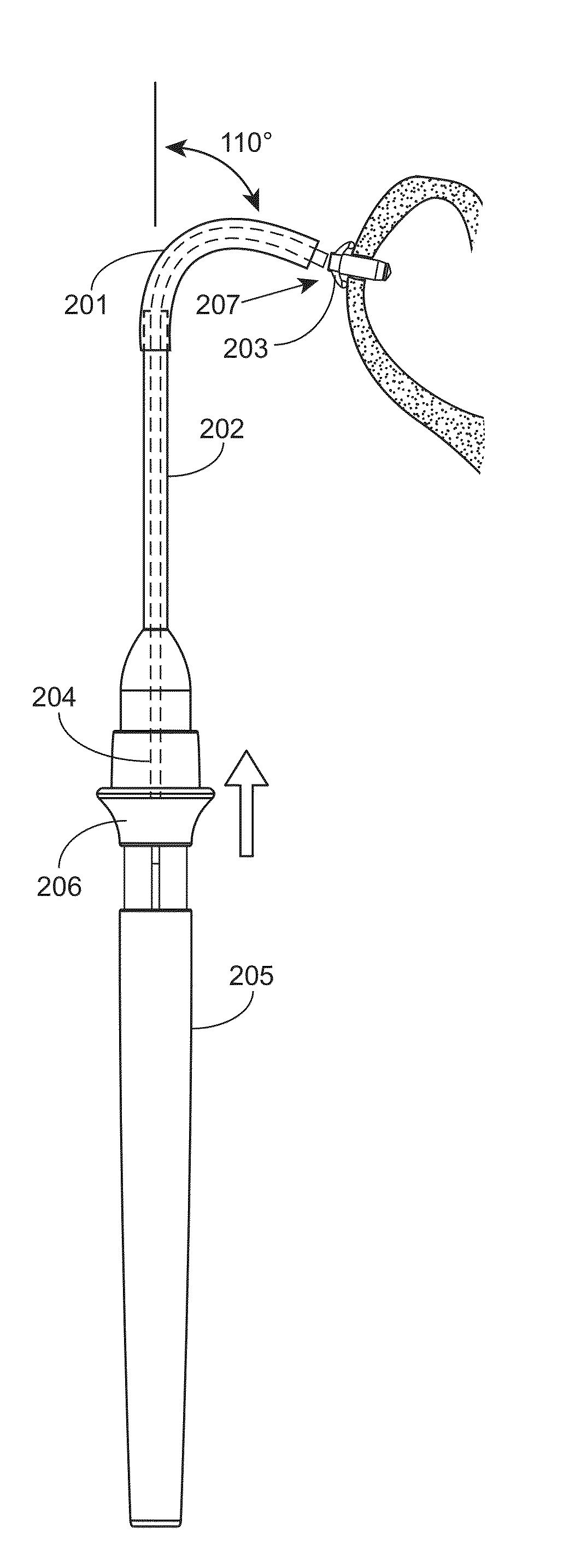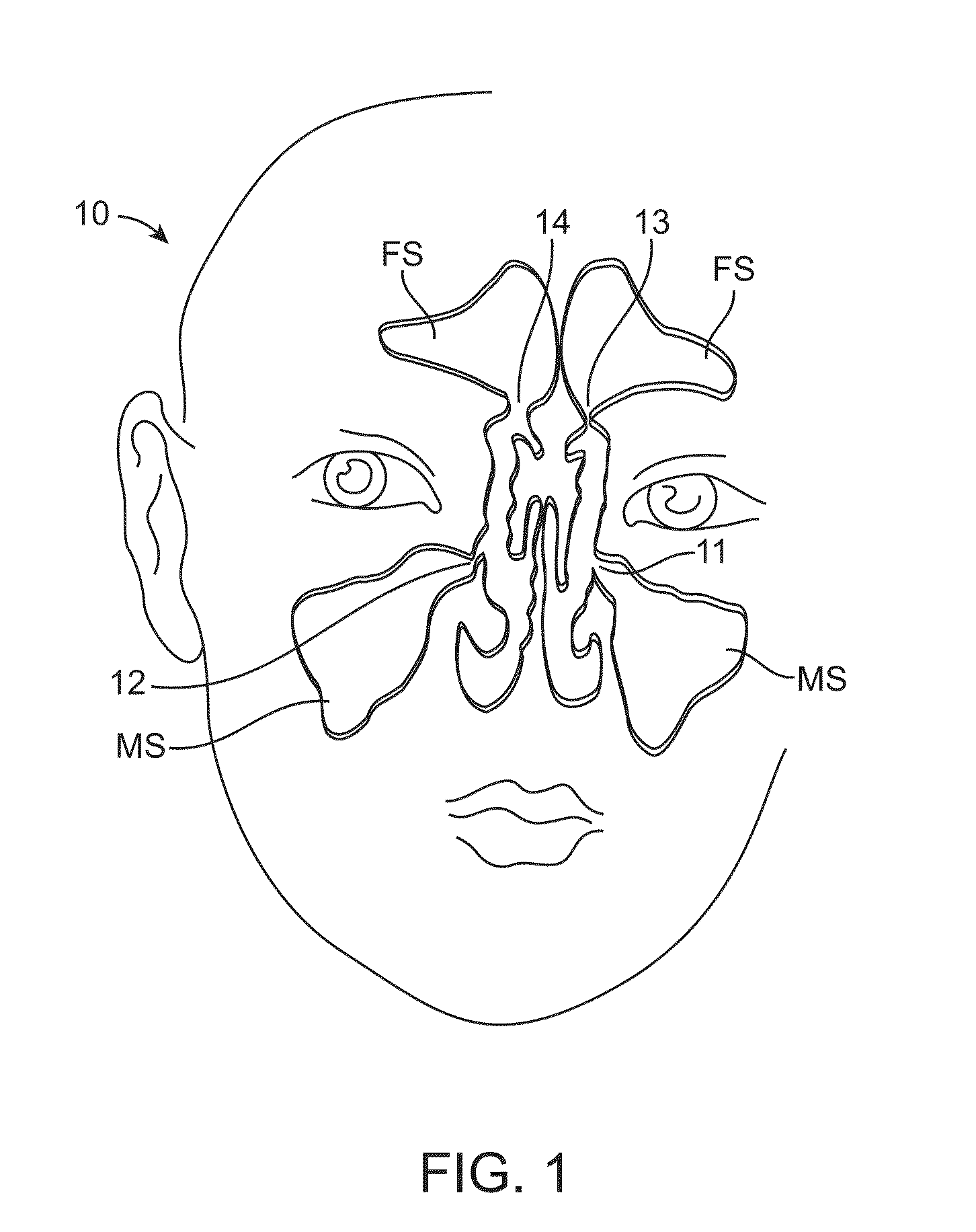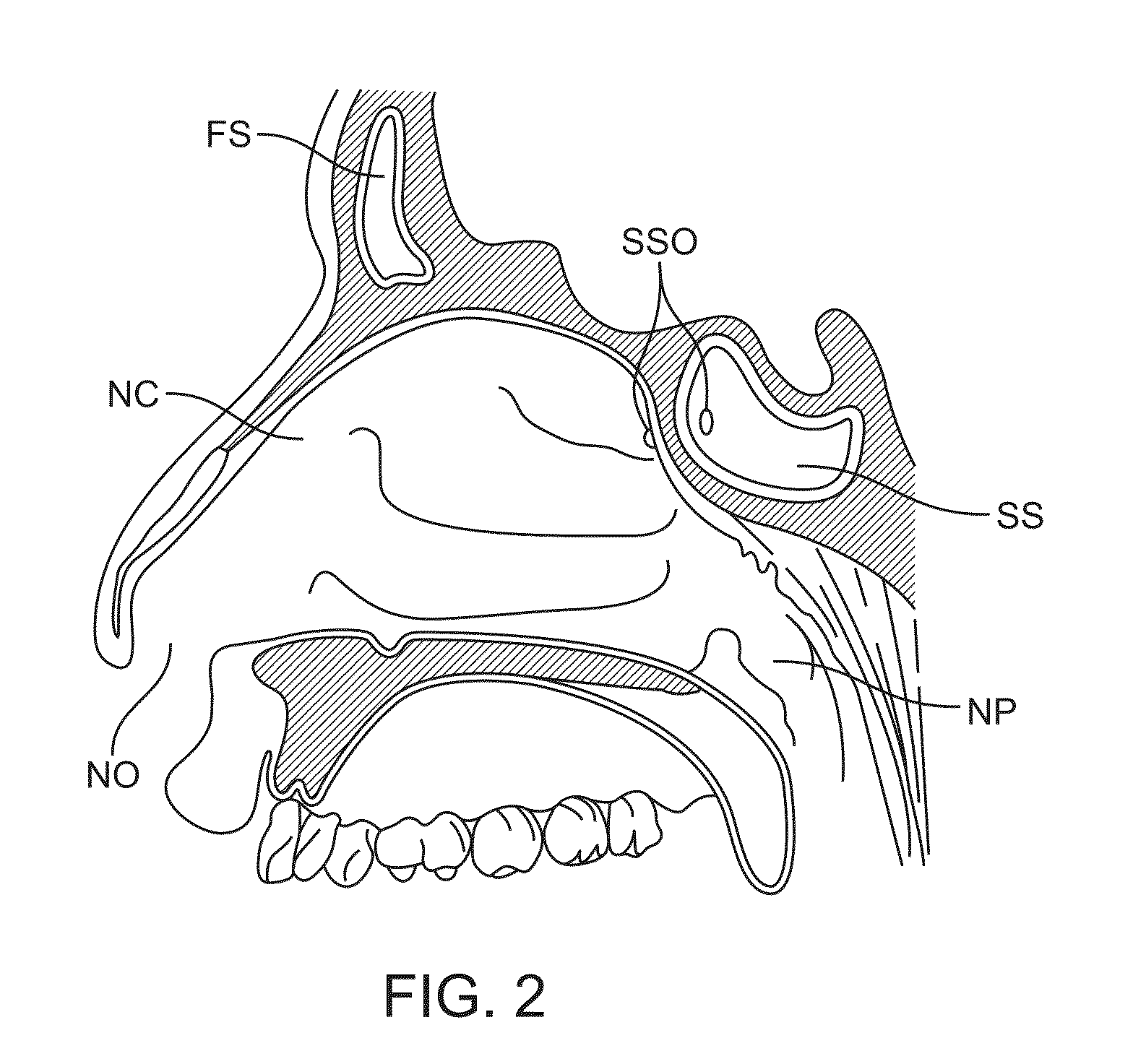Devices and methods for inserting a sinus dilator
a technology of sinus dilators and dilators, which is applied in the field of devices and methods for inserting sinus dilators, can solve the problems of damage to the epithelium that lines the sinuses, blocked passageways which drain through the sinuses, and mucosal congestion within the paranasal sinuses
- Summary
- Abstract
- Description
- Claims
- Application Information
AI Technical Summary
Benefits of technology
Problems solved by technology
Method used
Image
Examples
examples
[0132]Experiments were performed using an embodiment where a portion of a tube as described herein was coated with a water swellable (e.g., hydrophilic) material. The tube included an inner tube composed of 30 mm Carbothane grade PC-3572D (hydrophobic polymer) with a 74 mil (1.9 mm) outside diameter and 50 mil (1.3 mm) inside diameter. The longitudinal outer half of the inner tube was laminated with 30 mm Tecophilic HP-93A-100 (hydrophilic polymer) with a 104 mil (2.6 mm) outer diameter and 38 mil (1 mm) inner diameter. FIG. 11A shows an image of the tube before hydration. The tube was hydrated at room temperature in de-ionized water for 2 hours. As shown in FIG. 11B, after hydration for 2 hours, the hydrophilic polymer underwent localized swelling which placed the tube into a curved configuration with a bend angle of 110°.
PUM
 Login to View More
Login to View More Abstract
Description
Claims
Application Information
 Login to View More
Login to View More - R&D
- Intellectual Property
- Life Sciences
- Materials
- Tech Scout
- Unparalleled Data Quality
- Higher Quality Content
- 60% Fewer Hallucinations
Browse by: Latest US Patents, China's latest patents, Technical Efficacy Thesaurus, Application Domain, Technology Topic, Popular Technical Reports.
© 2025 PatSnap. All rights reserved.Legal|Privacy policy|Modern Slavery Act Transparency Statement|Sitemap|About US| Contact US: help@patsnap.com



